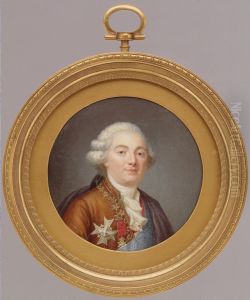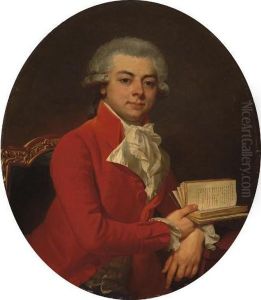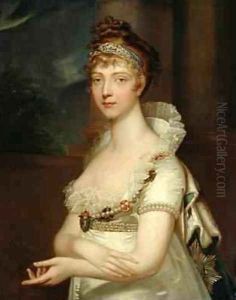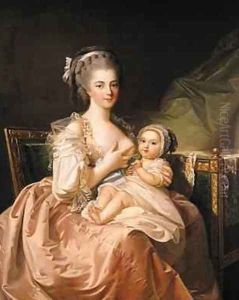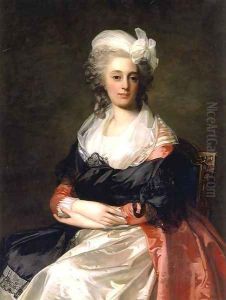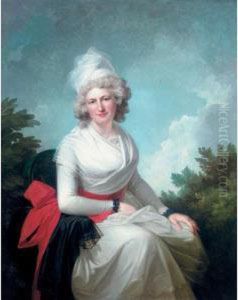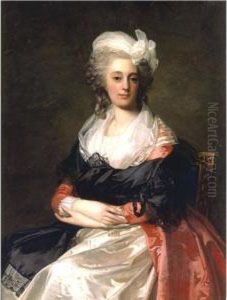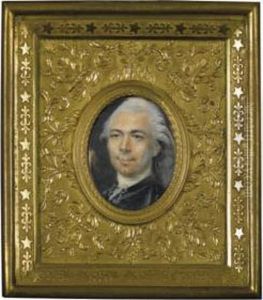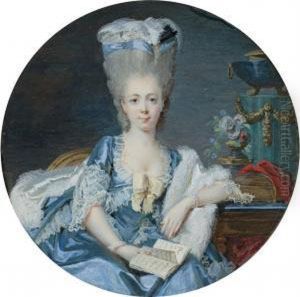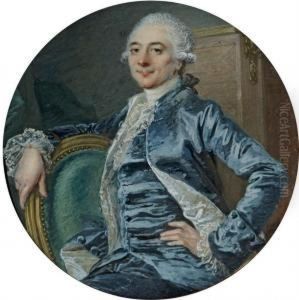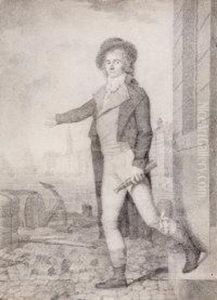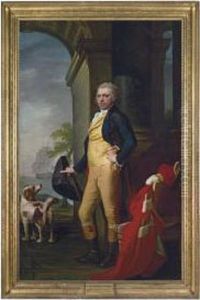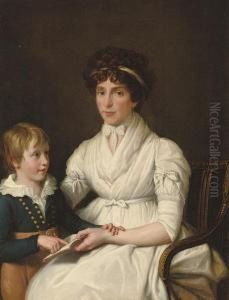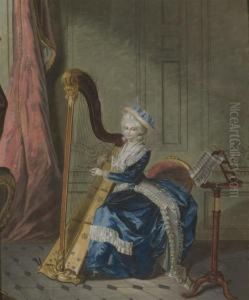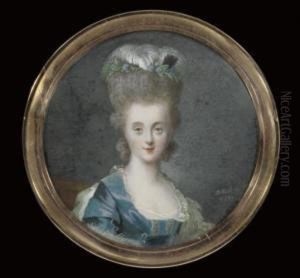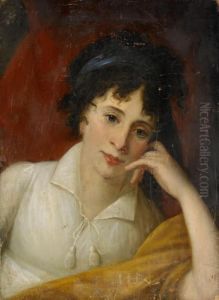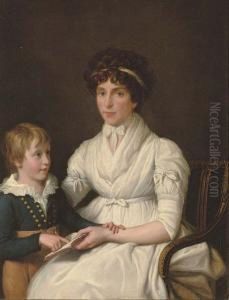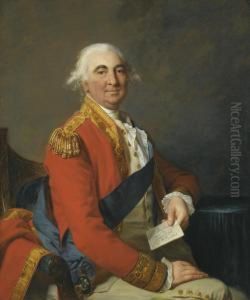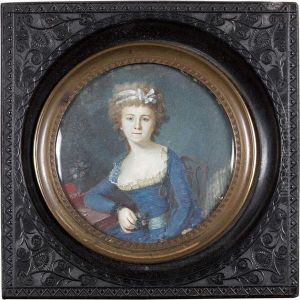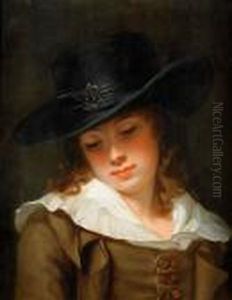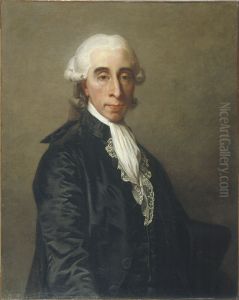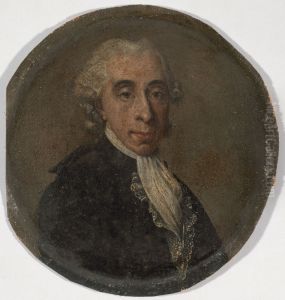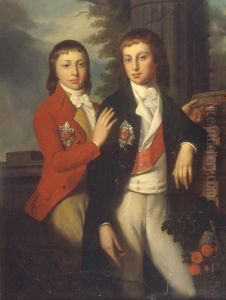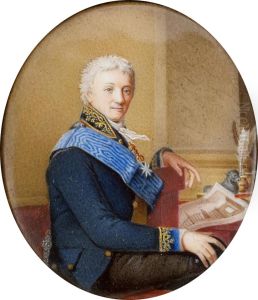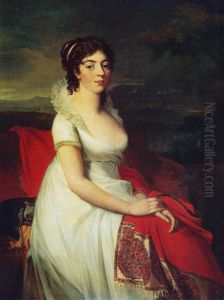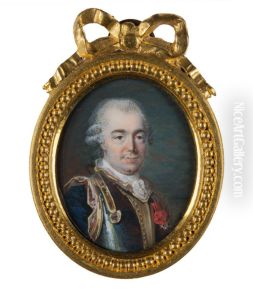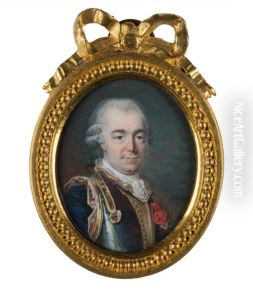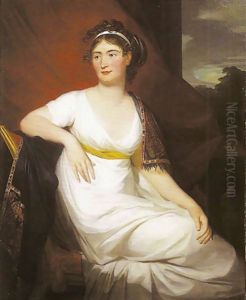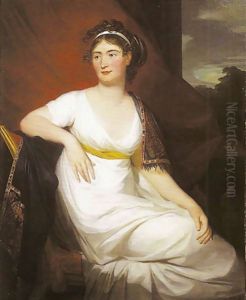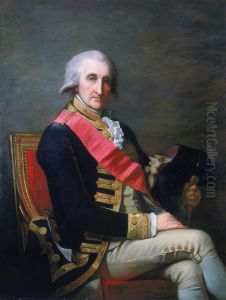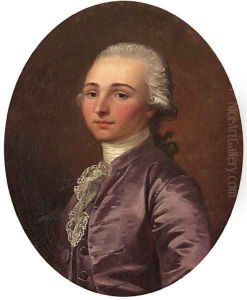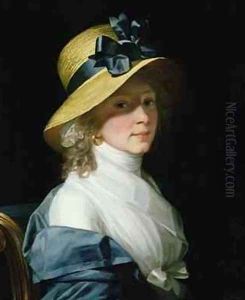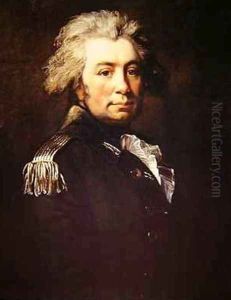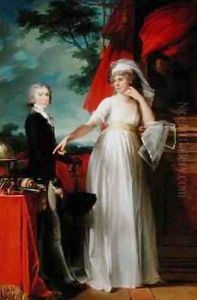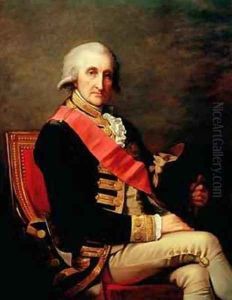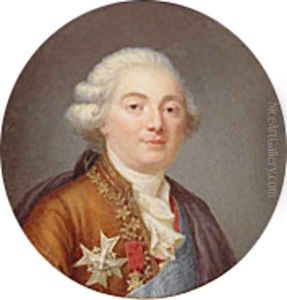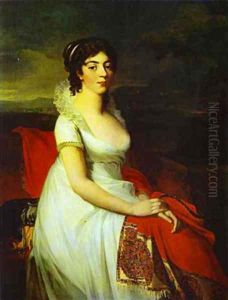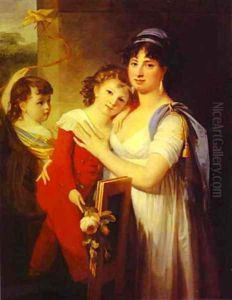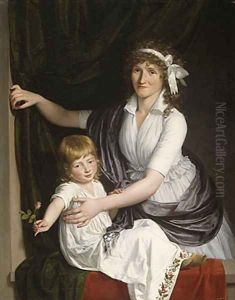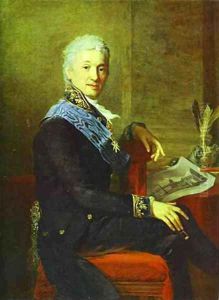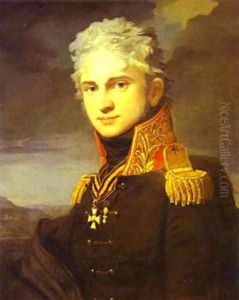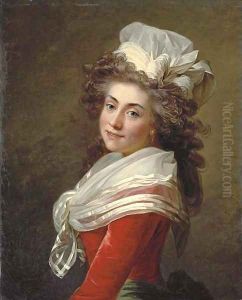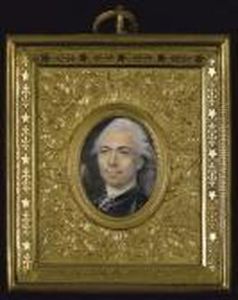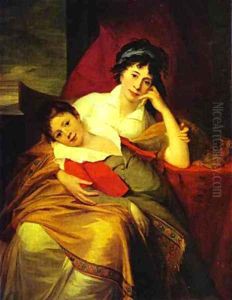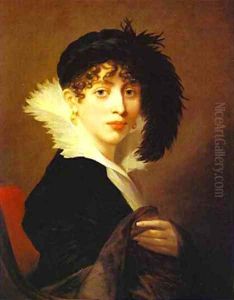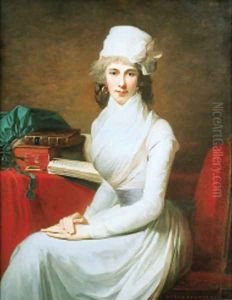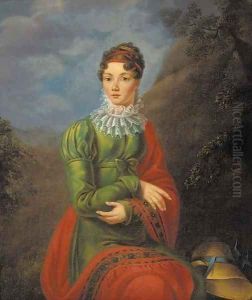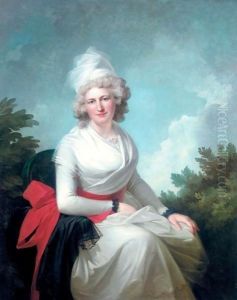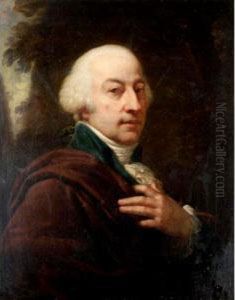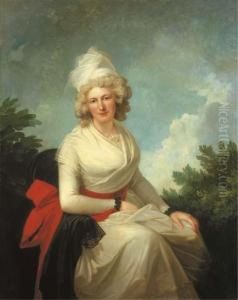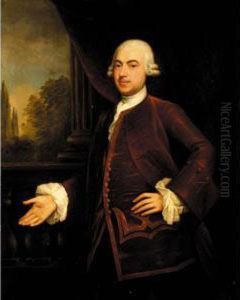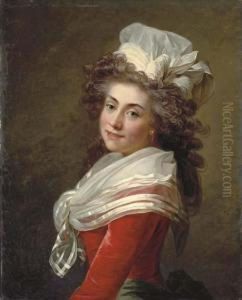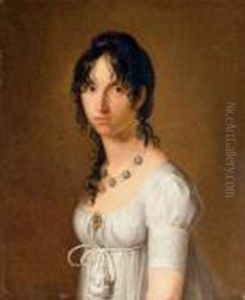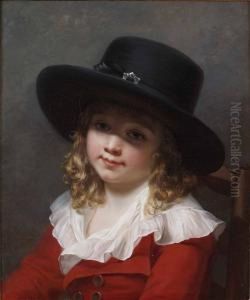Jean-Laurent Mosnier Paintings
Jean-Laurent Mosnier was a French painter and miniaturist known for his portraits, who worked during a period of significant political and social change in France. Born on March 15, 1743, in Paris, Mosnier began his artistic training under Louis Tocqué, a respected portraitist of his time. He quickly gained recognition for his talent and was admitted to the Académie Royale de Peinture et de Sculpture in 1776.
Mosnier became a popular portraitist among the French nobility, and his career flourished during the reign of Louis XVI. His style was characterized by its elegance, attention to detail, and the delicate rendering of his subjects' attire and demeanor, which was typical of the pre-Revolutionary French aristocracy's taste. However, the French Revolution, which began in 1789, dramatically changed the course of his career. As the revolutionaries grew hostile towards the aristocracy and their associated artists, Mosnier's clientele dwindled.
Facing the challenges of the Revolution, Mosnier left France in 1791 and moved to London, where he continued to work as a portraitist. He found a new clientele among the British aristocracy and expatriate French nobles. In 1793, he exhibited at the Royal Academy of Arts in London, which helped to bolster his reputation.
Mosnier did not limit his stay to Great Britain; in 1801, he moved to Saint Petersburg, Russia. There, he became a court painter to Tsar Alexander I, enjoying considerable success and receiving numerous commissions from the Russian nobility. His work from this period shows a blend of French elegance and Russian opulence, reflecting the tastes of his new patrons.
Jean-Laurent Mosnier's career came to an end with his untimely death in Saint Petersburg on July 8, 1808. Although he is less well-known today than some of his contemporaries, Mosnier's work provides a fascinating glimpse into the world of the ancien régime and its aftermath. His portraits remain valuable for their historical and artistic significance, capturing the likeness and personalities of his subjects with a graceful and refined aesthetic.
